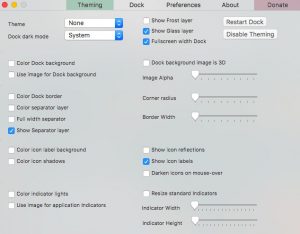

Team TaylorMade athletes are also planned to start taking advantage of this new program with Collin Morikawa and Charley Hull being the first to put their MySymbol balls into play this month. Colours can also be mixed and matched to create a ball that best represents them. To match the theme of their MySymbol, the colour of the TaylorMade logo and/or their custom number/text can be made one-of-a-kind by changing the standard black to five vibrant colours including navy, green, red, orange or pink. The characters replacing the standard number can be letters, numbers or characters of a four-character variety. Golfers can choose up to four alpha numeric characters to replace the logo or eight characters on three eligible lines of text on the side of the ball. Not only can golfers replace a number with a symbol, but personal messaging possibilities are endless. Personal messaging possibilities are endless

Golfers can also use the side of the golf ball to place the same or a different stock logo of their choosing. Symbol category options are: animals, countries, foods, holidays, nature, sports and states, amongst others. 3 on the golf course, but now a TP5x taco or a TP5 Canadian flag With the MySymbol program, golfers will no longer be looking for a TP5x No. With TP5 and TP5x golf balls, golfers can replace the standard number under the TaylorMade logo with one of more than 100 stock logo symbols. We are excited to bring endless options for customization and personalization to our consumers in this unique way with MySymbol.” “We have invested heavily in visual technologies and personalization because it is by far what golfers, including our TaylorMade athletes, are asking for. “Customization and personalization within golf is amongst the biggest trends in the industry right now and MySymbol puts TaylorMade in the forefront of that space,” said Mike Fox, Senior Director of Product Creation, Golf Ball. MySymbol allows golfers to make TP5 and TP5x completely their own with logo and design options such as picking the colour of the TaylorMade logo, choosing a symbol or multi-digital alphanumeric positions below the TaylorMade logo. Today, TaylorMade takes golf ball personalization to a level no company in the industry has before with the all-new MySymbol golf ball program. I don't know which one is better, so I just report the dangerous relocs for those changed R_RISCV_GOT_HI20, rather than report segment fault.As customization, personalization and visual technology are becoming the fastest growing categories in golf, TaylorMade Golf has created industry leading innovations and possibilities for golfers to play in never-before-seen ways that enhance performance and personalization. Or alternatively, we probably can encode the symbol value to the r_addend directly, without referring to a symbol, like what RELATIVE relocs do.
MYSIMBL TEXT UPDATE
If we convert it to HI20 + LO12, then we should update the symbol to the got entry (maybe need to add one, but seems hard to get the dynindx or. But there is a problem for the R_RISCV_GOT_HI20 + PCREL_LO12. My idea is that try to update the PCREL relocs and their referenced symbols to the corresponding HI20/ LO12_I/S relocs and correct target symbols. Your assumption is correct, the PCREL relocs are converted to the directly access relocs, but we don't update them to the relocation table, so we will get segment fault when the -emit-relocs is set.Īttached is my proposed solution, without fully testing. (It's possible that this bug also exists for normal R_RISCV_HI20 relocations in the source file, or maybe that case would've been caught earlier and it's only the late transformation of the relocation that causes the problem. However, when calling into the riscv_elf_relocate_section() backend, the relocation ends up being transformed into an R_RISCV_HI20 absolute relocation, where the high 32 bytes of r_info are simply an absolute address.
MYSIMBL TEXT CODE
In my testcase, the problematic relocation starts out as an R_RISCV_PCREL_HI20 relocation (where the high 32 bytes would be a symbol index, so this code would work correctly). However, for some absolute relocations in the RISC-V architecture, it is actually an absolute offset. The problem is that this code assumes that r_symndx (computed from `irela->r_info > r_sym_shift`) can always be trusted to be a symbol index. I have debugged the segfault a bit and found that it happens at `rh = elf_sym_hashes (input_bfd) ` in elflink.c:11232, because indx is completely out of range.

$ riscv64-elf-gcc -nostdlib -T test.ld -Wl,-emit-relocs -mcmodel=medany -o test test.cĬollect2: fatal error: ld terminated with signal 11 The following minimal testcase can reproduce it: I'm using 2.35.1, but I also briefly tried out the latest Git tree and saw it there as well. I have run into a segfault in GNU ld for the RISC-V architecture.


 0 kommentar(er)
0 kommentar(er)
